How to Cook Perfect Millet on the Stove
on Apr 17, 2022, Updated Apr 02, 2025
This post may contain affiliate links. Please read our disclosure policy.
Storing, cooking, using millet...here's everything you need to know about this delicate grain!
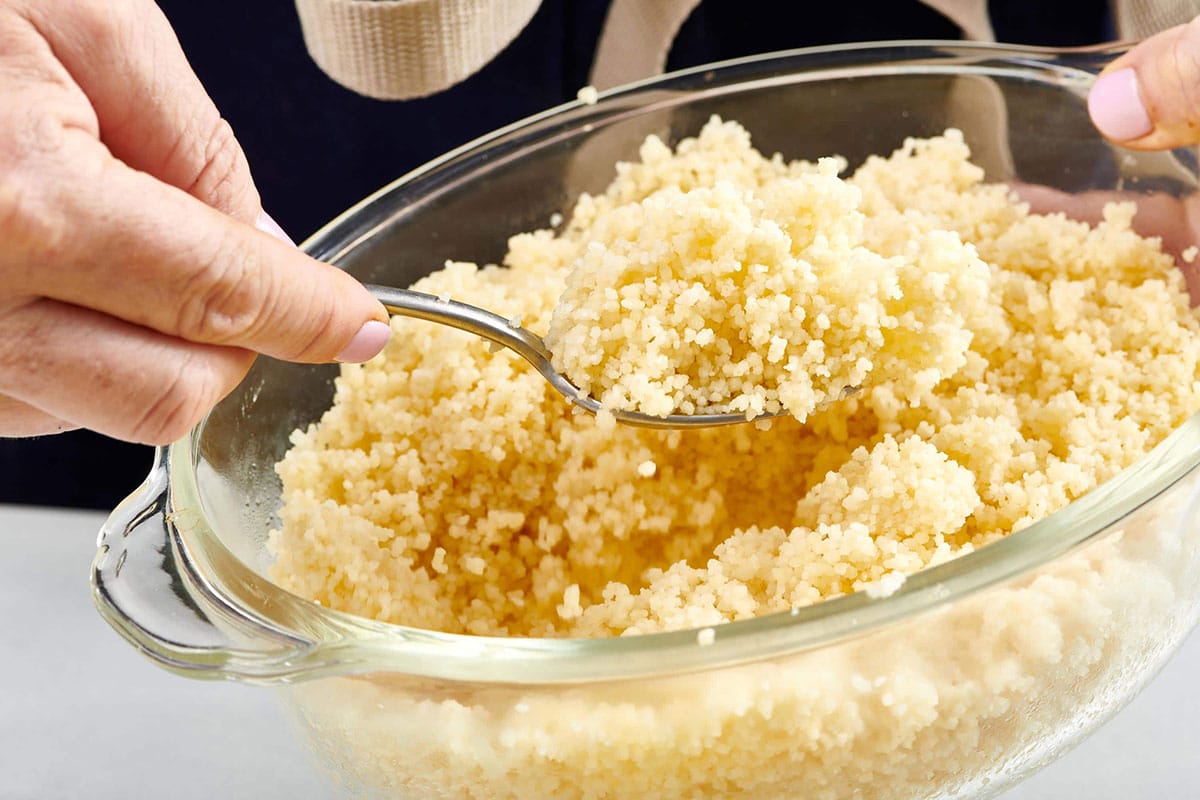
Millet is a wonderful, naturally gluten-free grain with the versatility and ease of preparation of rice or other grains. Millet can be used in various ways, both sweet and savory. It is most commonly cooked as a porridge for breakfast, but raw millet can be tossed into baked goods for an extra crunch or used to thicken soups. It can serve as a binder in vegetarian patties or as a base for casseroles or grain salads.
Millet is so easy to cook and a wonderful simple side dish. It can soak up all kinds of sauces, just like rice. Millet flour is also gluten-free, so it’s used in tons of gluten-free products.
By signing up, you agree to our Privacy Policy.
What's In This Post?
- What Is Millet?
- What Does Millet Look Like?
- What Does Millet Taste Like?
- Millet vs. Millet Flour
- Where to Find Millet
- How to Choose the Best Millet
- How to Prepare and Cook Millet
- How to Cook Millet in a Pot on the Stovetop
- How to Store Millet
- FAQs
- Millet Recipes
- More Easy-to-Cook Grains
- How to Cook Perfect Millet on the Stove Recipe
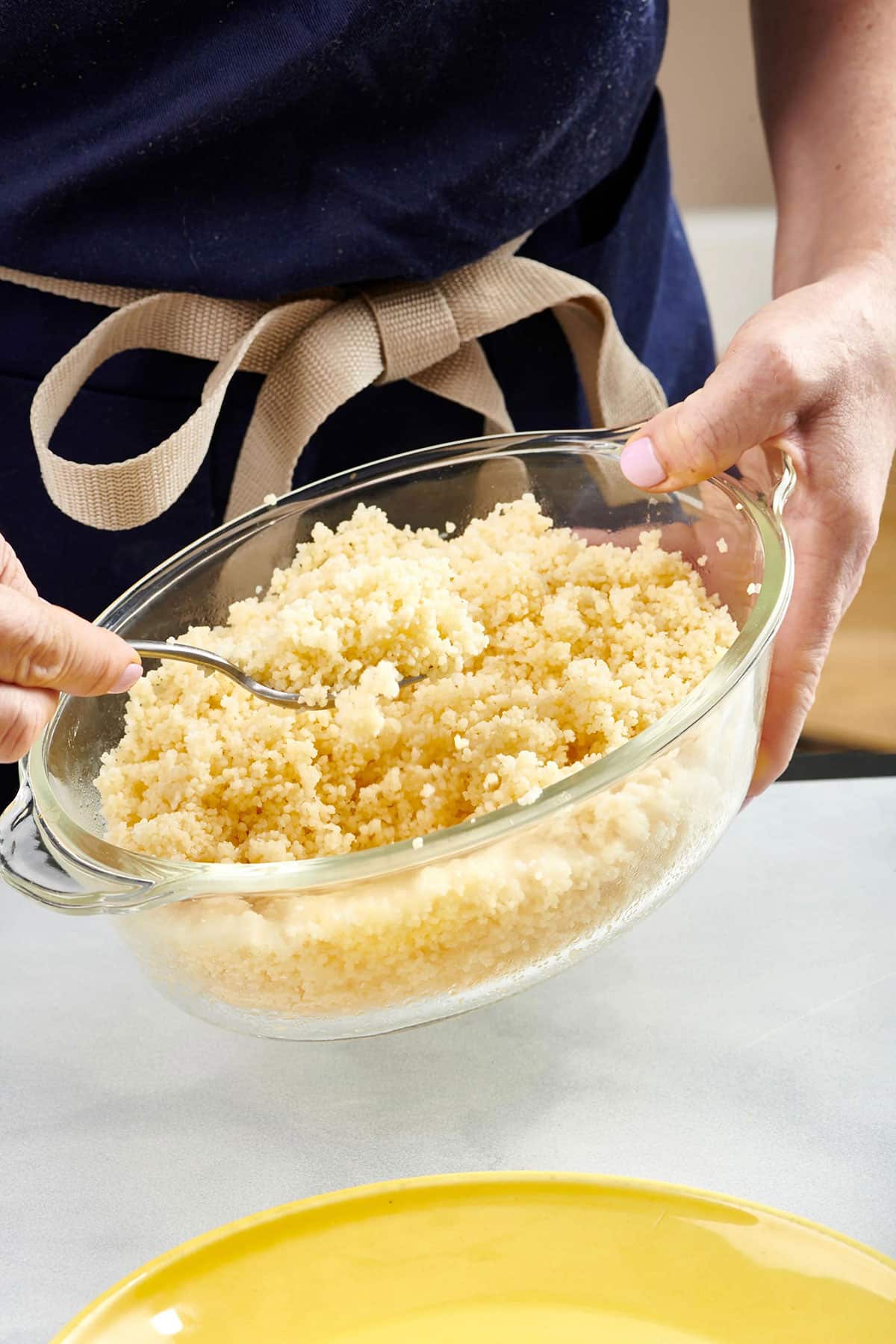
Millet has a mild corn-like flavor, and it’s very versatile. Here’s everything you need to know about how to cook this delicate grain!
What Is Millet?
Millet is a cereal grain that belongs to the grass family and hails from Africa and northern China. It is one of the oldest cultivated grains, with more than 6,000 varieties, which is wild. In many parts of the world, millet is a staple of diets. Pearl millet, foxtail millet, kodo millet, and proso millet are the most commonly available types of millet available in the U.S., though pearl millet is the most common variety of millet in the United States.
In America, many people think of millet as something for the birds — like, literally. You can’t quite blame them since it is the main ingredient in birdseed. But it is also a primary ingredient in beer, fermented drinks, and porridge and as versatile a grain as rice.
What Does Millet Look Like?
Millet looks like teeny tiny corn kernels or seeds. These little millet kernels are small, round, and white or ivory in color. Millet can also be processed in the form of flour or flakes or packaged as millet “grits.”
What Does Millet Taste Like?
Millet has a mild corn-like flavor, slightly on the sweeter side among grains. If toasted before cooking, it develops a wonderful but delicate nutty flavor.
Like rice, millet does not have much flavor on its own and is good at taking on the flavors of other ingredients. So, whether cooked in savory or sweet dishes or combined with other ingredients in salads and other dishes, it is a pretty neutral backdrop for all kinds of seasonings.
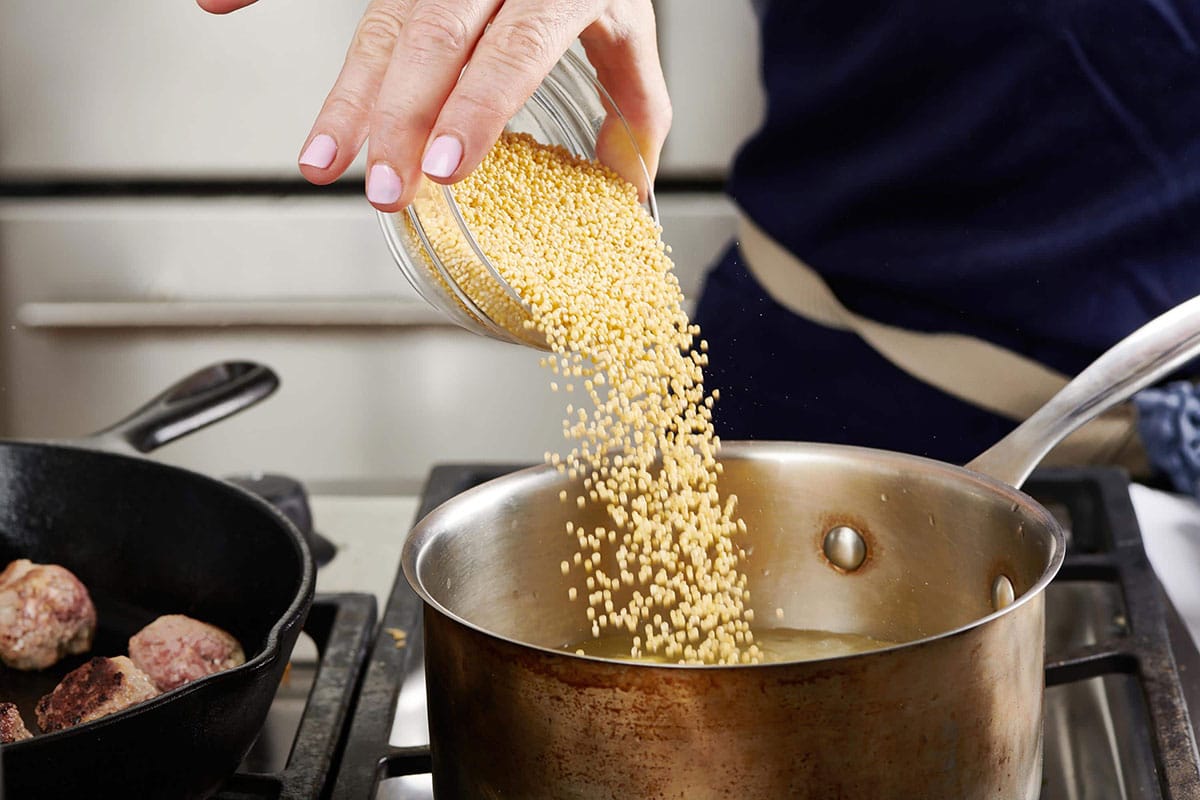
Millet vs. Millet Flour
Millet is the full-grain version of this grain. It’s referred to as millet flour when the grain is ground down. Whole-grain millet is used as a rice substitute, while millet flour is a great gluten-free substitute for wheat flour.
Where to Find Millet
Millet is usually sold in either pre-packaged containers in the baking or cereal aisles or in bulk bins. It can be hard to find in regular supermarkets but is usually readily available in well-stocked grocery stores, specialty markets, and health food or natural food stores. Millet flour is usually stored with other specialty flours, and millet flakes can be more challenging to find but are readily available online.
How to Choose the Best Millet
Like all grains and cereals, millet should be dry and free of any mold or moisture. If you can, give it a sniff — and do not buy if it smells rancid, musky, or earthy or looks moist.
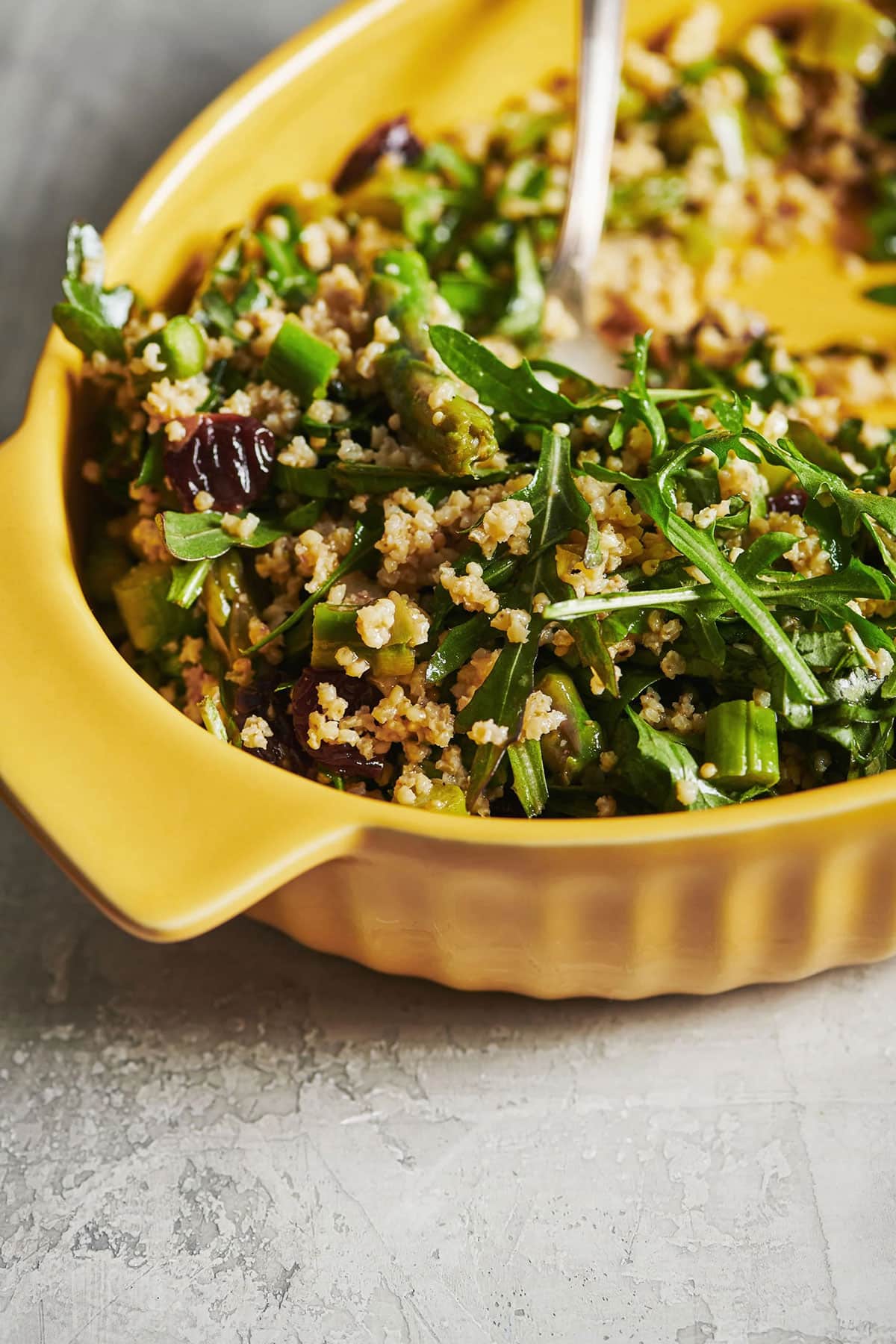
How to Prepare and Cook Millet
Millet is wonderfully low maintenance to prepare. Simply rinse before cooking —no soaking time is needed. You can also toast it for a few minutes before cooking, either in a bit of oil or butter or in a dry pan — it adds a deeper, more roasted flavor to the finished dish (see recipe).
Millet, like most other grains, is usually cooked by adding it to boiling water or broth until it absorbs liquid, puffs up, and cooks through, about 30 minutes. The more water and longer the cooking time, the softer texture the millet will have. And when cooked for an extended time, it will have a more polenta-like consistency. The ratio of liquid to millet is about 2 1/4 cups of water to 1 cup of millet.
Millet can be cooked in a rice cooker, a pressure cooker, an instant pot, or even a slow cooker, but the most convenient way to cook millet for most people is on a pot on the stovetop.
Ingredients
- Millet
- Broth or water – If using broth, you can either use full-strength broth (I prefer less sodium) or dilute the north 1:1 with water. Choose between vegetable or chicken broth. Millet is very bland on its own, and using diluted broth will bump up the flavor.
- Kosher salt – Helps amplify the delicate flavor of the grain.
- Unsalted butter – Adding a little fat to the millet gives it more flavor.
How to Cook Millet in a Pot on the Stovetop
- Rinse the millet: Place the millet in a sieve and rinse well with cool water.
- Toast the millet (optional): Feel free to skip this step if you want a simpler, blander-cooked millet. If you want to toast your millet, place the rinsed millet in a wide-bottomed saucepan and heat over medium heat for about 4 minutes, stirring occasionally until the millet turns golden brown and starts to smell fragrant.
- Add liquid: Then add the water or broth, salt, and butter — or simply combine the liquid with the millet, butter, and salt in a saucepan if you skipped the toasting.
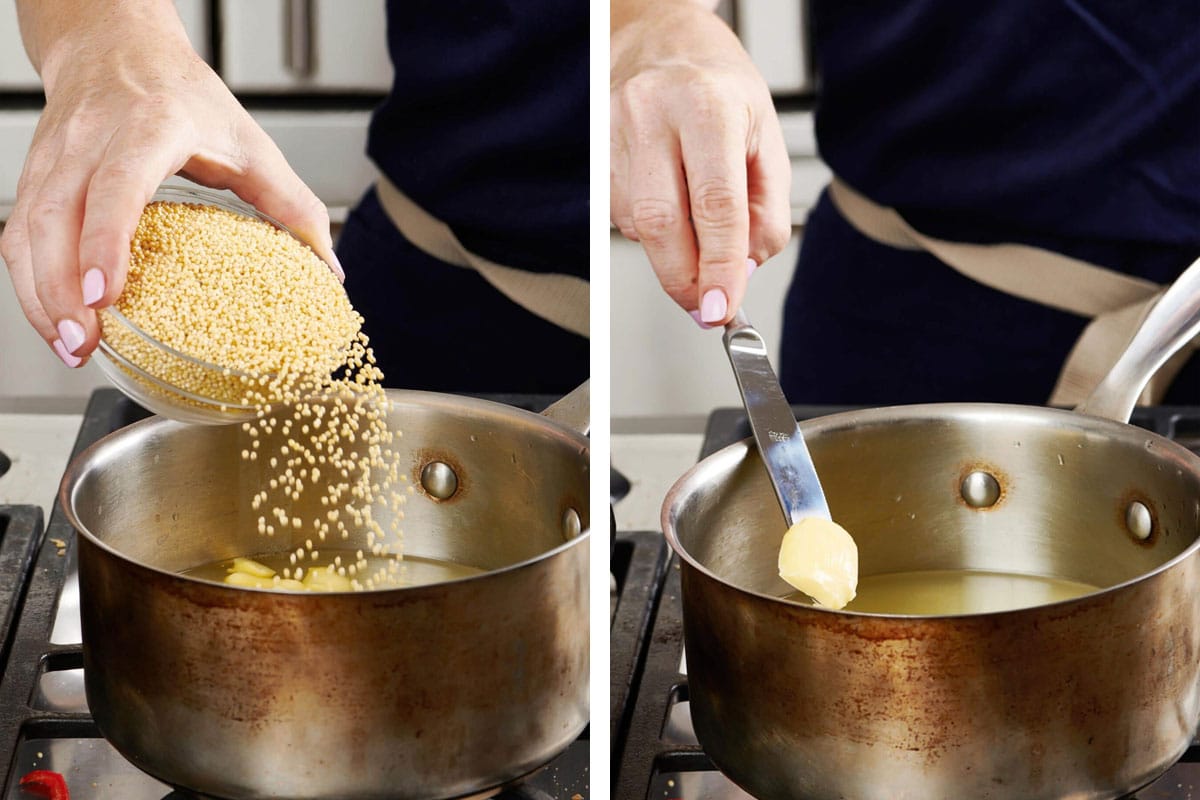
- Bring it to a boil, then cover: Give the mixture a good stir and turn the heat up to high. Bring the mixture to a boil, then lower the heat so the liquid stays at a simmer and cover the pot.
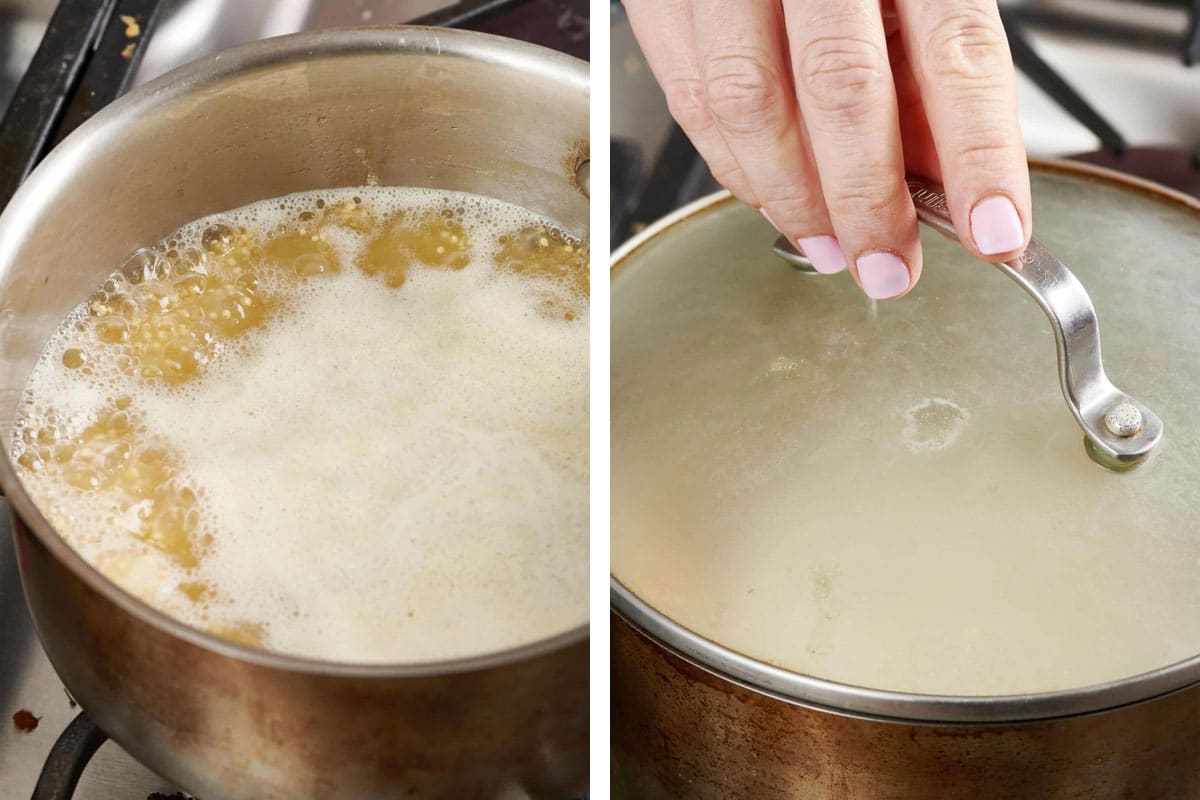
- Cook: Cook for about 15 minutes until most of the liquid has been absorbed, keeping the pot covered until you start checking towards the end of the cooking time. Remove the pot from the heat and let it sit, with the cover still on, for 10 more minutes, until all of the liquid is absorbed.
- Fluff it up: Remove the cover and fluff the millet with a fork, much like you would fluff rice. Taste and add more salt if needed. Serve hot as a base instead of something like rice or another grain in a dish, or add to a millet recipe.

How to Store Millet
The best way to store uncooked millet is in an airtight container in the freezer, where it will last at least 1 year. In the refrigerator, millet can stay good for 4 to 6 months; in a cool, dark place, its shelf life will be around 2 months. Millet that has gone bad may have a bitter flavor and aftertaste. Most importantly, you should definitely toss it if you see that it has become moldy.
Cooked millet can be stored for up to 5 days in the fridge in a sealed container. It can also be frozen in an airtight container or freezer-proof zipper-top plastic bag for up to 6 months.
FAQs
Small seed grass millet is gluten-free. That means millet is appropriate to include in gluten-free and celiac diets, which means that millet flour is a really great substitute for wheat flour when baking.
Pearl millet is technically a warm-season crop, but since it’s usually sold in its dried form, this product should be available year-round.
Millet provides fiber, iron, Vitamin B, manganese, phosphorus, magnesium, and some important minerals like calcium and potassium, according to the USDA. It has the highest calcium content of all cereal grains. Millet is gluten-free and highly alkaline, which makes it easily digestible.
Nope, it can be cooked right from the package.
Millet Recipes
Even if a recipe doesn’t call specifically for millet, it is an excellent substitute for other whole grains.
More Easy-to-Cook Grains
Pin this now to find it later
Pin It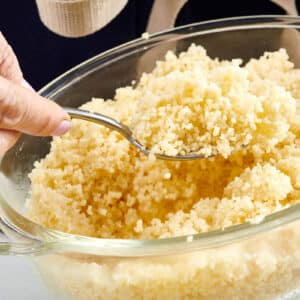
How to Cook Perfect Millet on the Stove
Ingredients
- 1 cup millet
- 2 ¼ cups water (or vegetable or chicken broth)
- ½ teaspoon kosher salt
- 2 teaspoons unsalted butter
Instructions
- Place the millet in a sieve and rinse well with cool water. After that, you can either start by toasting the millet if you want a deeper, roastier flavor to the finished dish or skip that step. If you want to toast it, place the rinsed millet in a wide-bottomed saucepan and heat over medium heat for about 4 minutes, stirring occasionally until the millet turns golden brown and starts to smell fragrant. Then add the water or broth, salt, and butter. Or simply combine the liquid with the millet, butter, and salt in a saucepan.
- Give the mixture a good stir and turn the heat up to high. Bring the mixture to a boil, then lower the heat so the liquid stays at a simmer and cover the pot. Cook for about 15 minutes until most of the liquid has been absorbed, keeping the pot covered until you start checking towards the end of the cooking time. Remove the pot from the heat and let it sit, with the cover still on, for 10 more minutes.
- Remove the cover and fluff the millet with a fork, much like you would fluff rice. Taste and add more salt if needed. Serve hot.
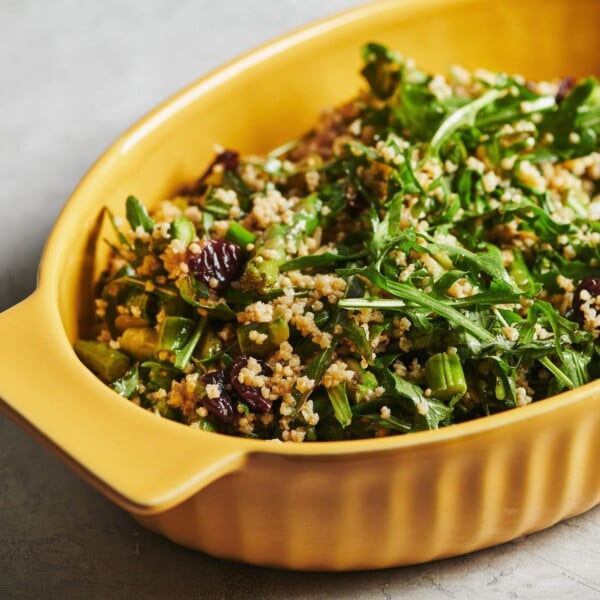
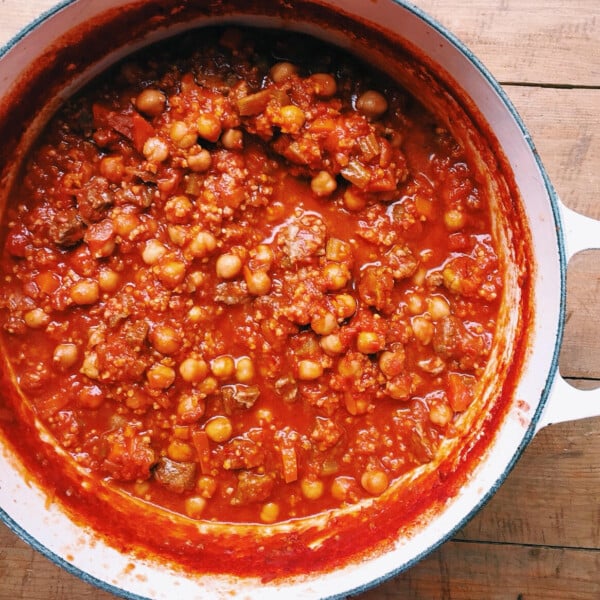
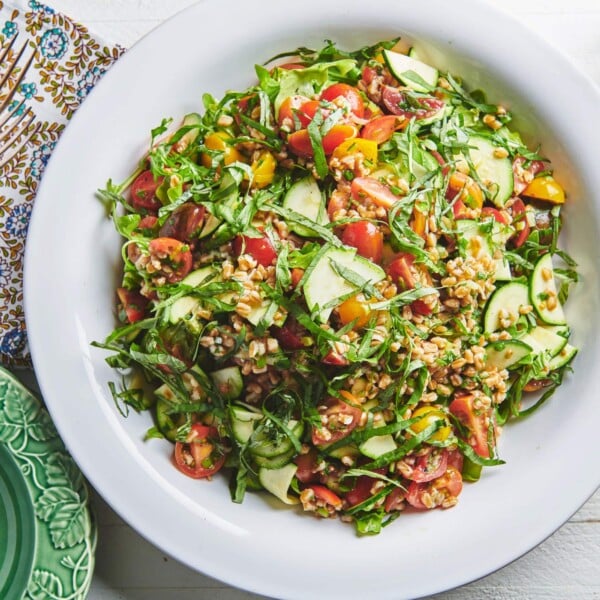









I make millet with a mix of milk/water and almond milk for breakfast. I love using it!
I liked how easy it was to make Millet following your recipe steps. Millet is so versatile. It turned so good. Thanks!
Hi,
My millet came out great! I liked the easy to read format. One thing I think you could add is the yield for each of the measurements. I used one cup millet and I think it yielded about 2 1/2 cups cooked millet.
Thanks,
Lisa
Gracias se ven rices
Oh, I have a question. Do you toast the Millet before you rinse the Millet or do you rinse the Millet then toast? No one ever says on any recipe that I’ve come across. Thank you for your response
I made it a bit clearer! thank you! Place the millet in a sieve and rinse well with cool water. After that you can either start by toasting the millet if you want a deeper, roastier flavor to the finished dish, or skip that step. If you want to toast it, place the rinsed millet in a wide bottomed saucepan and heat over medium heat for about 4 minutes, stirring occasionally until the millet turns golden brown and starts to smell fragrant. Then add the water or broth, salt and butter. Or simply combine the liquid with the millet, butter, and salt in a saucepan.
Good day too you. Is there anything i can substitute for butter.
Thank You.
oil would be fine!